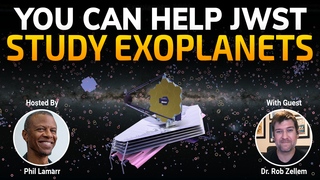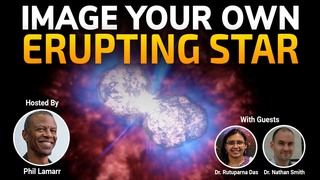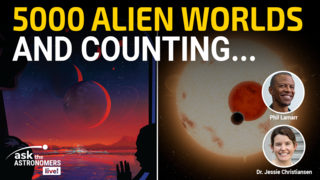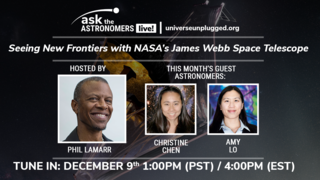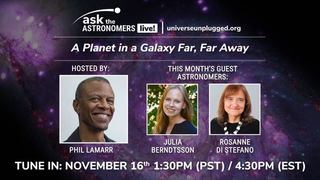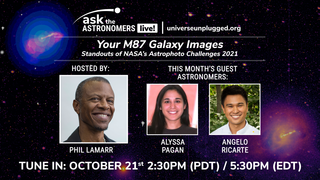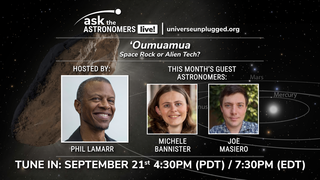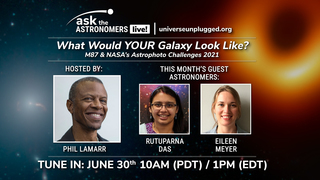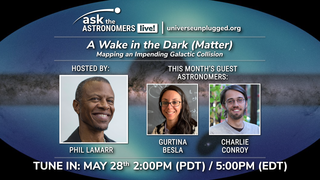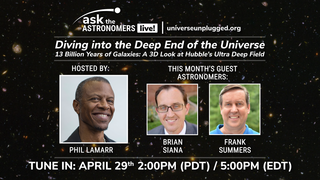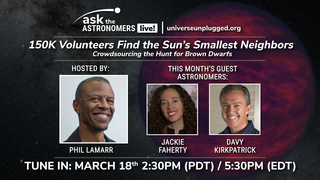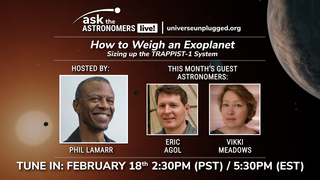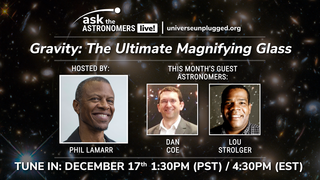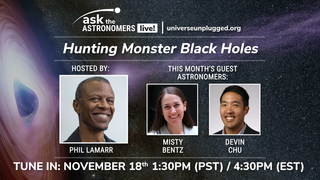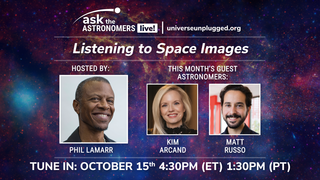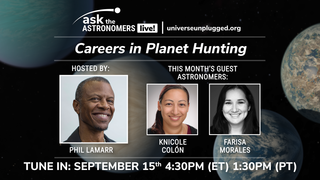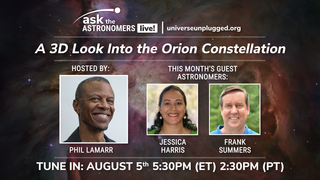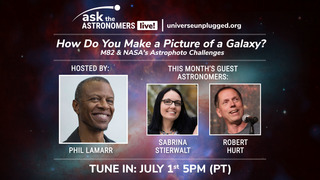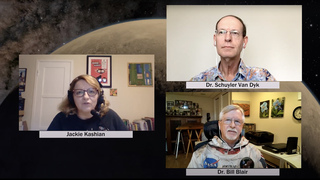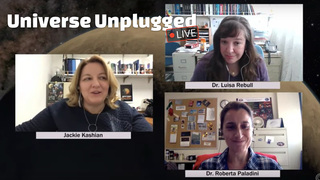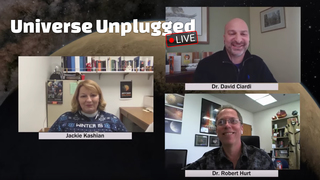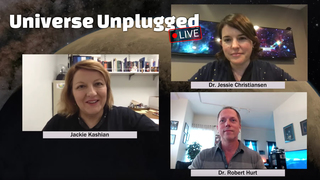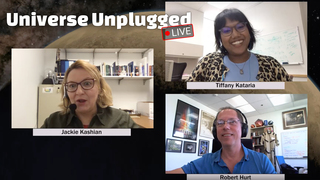Feedback for A Wake in the Dark (Matter)
By leaving feedback, you agree to allow NASA's Universe of Learning to publish the content and information you provide in your submission form. We will only use this information to recognize your entry on our series and social media, and we will never publish your email.
A Wake in the Dark (Matter)
Live Chat
•
May 28th, 2021
What happens when you map out the farthest stars in our Milky Way galaxy? You can trace how the gravity of a neighboring galaxy affected those distant stars' positions as our neighbor heads to a collision with our galaxy, leaving a wake among those stars. You can also use this wake to study the properties of dark matter, since dark matter does not emit or absorb light, and so is very hard to study. But dark matter does have gravity, and different theoretical versions of dark matter result in different gravitational tugs on those far out stars, resulting in different potential wakes left behind our in-falling neighbor!
Biographies of Show Participants
PHIL LAMARR (Host)
A Los Angeles native, Phil is an alumnus of Yale University and The Groundlings Theater and perhaps is best known as one of the original cast members of MAD TV, as “Hermes” on FUTURAMA, as "Marvin" in PULP FICTION, “Green Lantern” on JUSTICE LEAGUE and as the voice of SAMURAI JACK. For over 30 years Phil has thrilled audiences with his work on camera and behind the microphone on TV shows such as STATIC SHOCK, FAMILY GUY, STAR WARS: THE CLONE WARS, the CW’s THE FLASH & SUPERGIRL, GET SHORTY, LUCIFER and VEEP; feature films like MADAGASCAR 2, INCREDIBLES 2, and THE LION KING (2019) and video games including FORTNITE, SHADOW OF MORDOR, and the INJUSTICE, METAL GEAR SOLID, and the MORTAL KOMBAT series.
GURTINA BESLA (Astronomer)
Gurtina Besla received a B.Sc. in Physics & Astronomy from the University of Toronto (2005) and a Ph.D. from Harvard University (2011). She was then a NASA Hubble Fellow at Columbia University and then joined the faculty at the University of Arizona in 2014. Her research team creates detailed computer simulations of our Milky Way Galaxy and its nearest galaxy neighbors, including their dark matter.
CHARLIE CONROY (Astronomer)
Charlie Conroy received a B.A. in Physics & Astrophysics from the University of California, Berkeley (2005) and a PhD in Astrophysics from Princeton University (2010). He was then a Junior Fellow at the Society of Fellows at Harvard University, and an Assistant Professor at the University of California, Santa Cruz before joining the faculty at Harvard in 2014. His research focuses on understanding the formation and evolution of galaxies, including our Milky Way.
